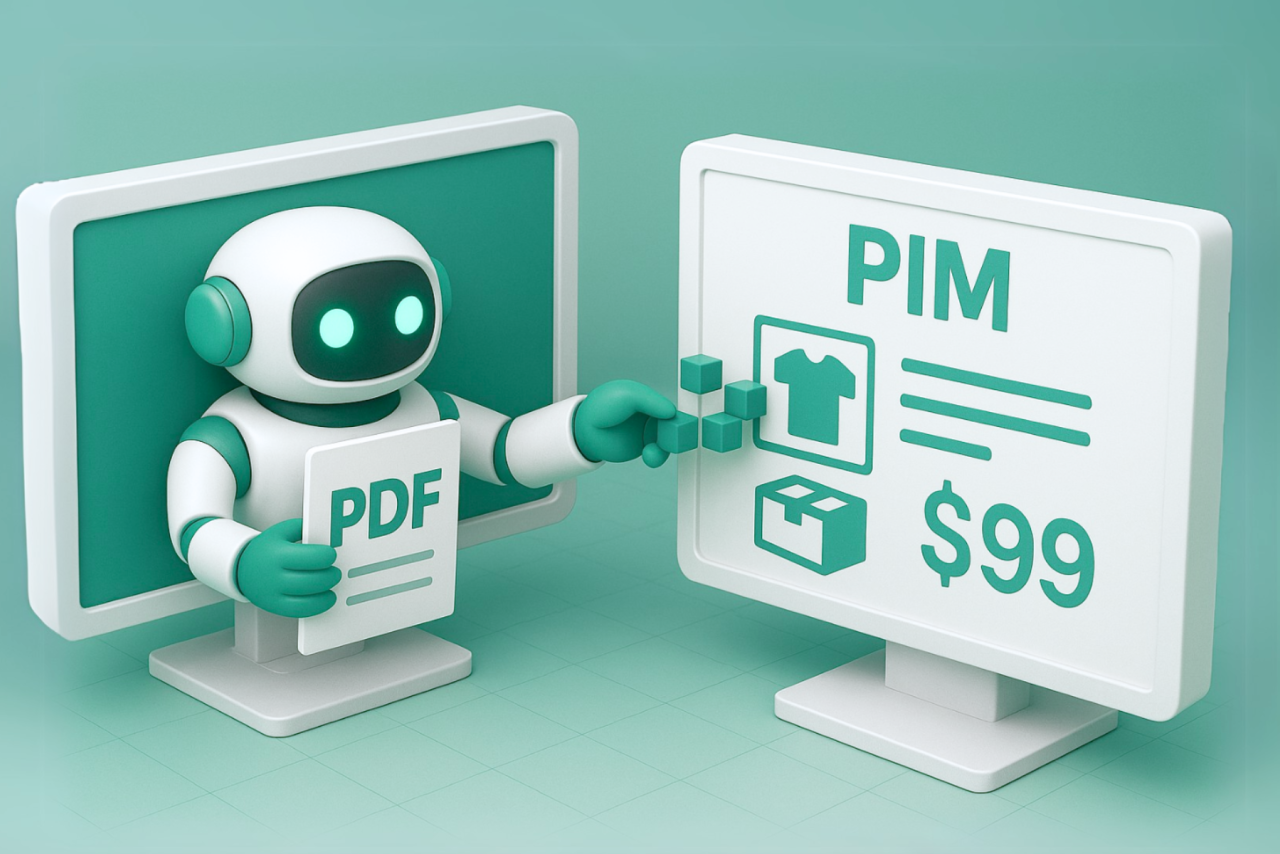From PDF to PIM: AI for error-free product data

Typing product data is a thing of the past: with OCR, machine learning and a smart PIM, you can transform catalogs into sales-boosting master data - quickly, cheaply and error-free. Discover how retailers and manufacturers implement the process and which tools we recommend as an e-commerce agency.
Digitization alone is no longer enough
The digital transformation has affected almost all industries, but its characteristics range from “Excel uncontrolled growth” to fully automated data hubs. Ever since the AI boom picked up speed in 2023, it has been clear that those who operate with outdated processes risk being overtaken by the competition. In retail in particular, it is not enough to store rudimentary article master data in the ERP. Today, customers, marketplaces and search algorithms demand detailed, constantly updated information - from material specifications and sizes to industry-specific values and high-resolution images. This knowledge is often already available in the company: in product data sheets, catalogs or price lists. The problem? It is stored in PDFs, scans or presentations instead of in a high-performance PIM system. This makes it impossible to pass on the data in a structured and quickly processable way.
Manual data collection - an expensive way
The seemingly most obvious solution would be to type in the values and copy them manually into a database. But even small assortments consume valuable hours this way - not to mention the potential for error that increases with every copy & paste action. Online retailers who create thousands of SKUs (Stock Keeping Units) per season simply exclude items if onboarding is too slow or too error-prone. Those who use their resources smarter, on the other hand, gain time-to-market, reduce returns and strengthen their pricing and delivery capability.
AI-supported data extraction: this is how you proceed
1. Analyze the data situation
Before you automate, check which document types are available, how large the volume is and how often new additions are created. Retailers process new supplier catalogs on a daily basis, whereas manufacturers often only do so during the initial PIM setup. This assessment determines whether you set up a one-off migration or a recurring pipeline process.
2. Define the data model
In the second step, you determine which attributes your PIM should actually store and later play out to the store, marketplace or print catalog. Product filters, variant logic, SEO fields, customs information - the clearer the structure, the more accurately the AI can recognize, validate and convert attributes.
3. Prepare documents
If your source documents are “real” PDFs, i.e. with embedded text, a script reads the characters directly. However, if the information is only in the form of an image in the PDF or even on paper, Optical Character Recognition (OCR) is used. Modern models achieve human hit rates here: Instead of a menu - you may be familiar with this from Google Lens - you can just as easily scan 300-page industrial catalogs and have them broken down by machine.
4. Intelligent extraction with ML models
Rule-based parsing quickly reaches its limits when units of measurement, date formats or identifiers are not used consistently. Machine learning models therefore use annotated examples to learn to recognize relevant tokens in context: If “12 kg” is written directly next to ‘weight’, the system identifies the value as a numerical field in kilograms - even if “12 kilograms” or “weight 12 kg” is written once. Semantic vectors capture relationships between words and even decode multilingual texts.
5. Integrating data into PIM systems
Normalization follows extraction. Weights can be converted to a standard unit, colors can be mapped to standard palettes, dates can be converted to ISO formats. A connector then writes the checked fields to your PIM via API - including media files, SKU links and single and multi-select relations. A quality gate with plausibility rules prevents incorrect records from entering your live system.
Practical example: MILE AI and EIKONA Media - a strong duo
Together with our technology partner MILE AI, we rely on special large language models (LLMs) from OpenAI, Meta and open frameworks. Unlike generic chatbots, the models are pre-trained with hundreds of real catalog pages, technical data sheets and marketing texts - in compliance with GDPR, of course.
A typical workflow:
- Upload & OCR: The customer uploads 50 supplier catalogs. The system automatically checks whether OCR is required and stores raw texts.
- In-context training: Five percent of the pages are manually annotated by our data engineers. The AI learns which passages contain weights, dimensions, certificates or EAN codes.
- Batch extraction: Within a few hours, thousands of attribute pairs are extracted, evaluated with confidence scores and exported to a JSON schema.
- PIM import & mapping: We use a connector to write the data with field and unit transformation directly into your PIM - for example Akeneo.
The result: where previously several people spent three weeks typing, today two afternoons are enough for validation and approval.
Conclusion
Faster, more precise, scalable
The combination of OCR, machine learning and PIM integration catapults your data processes into the year 2025. Instead of error-prone manual work, AI takes over repetitive tasks while your team takes care of product range expansion, marketing and customer service. You benefit from:
- Time and cost savings: items are online within hours instead of weeks.
- Data quality: Standardized formats reduce returns and increase conversion.
- Competitive advantage: Whoever is live first with complete data wins buy boxes and rankings.
As an e-commerce agency and PIM specialist, we support you from data modeling to go-live - including continuous improvement loops for new suppliers or product ranges. Talk to us if you want to transform document chaos into a future-proof product data flow.
